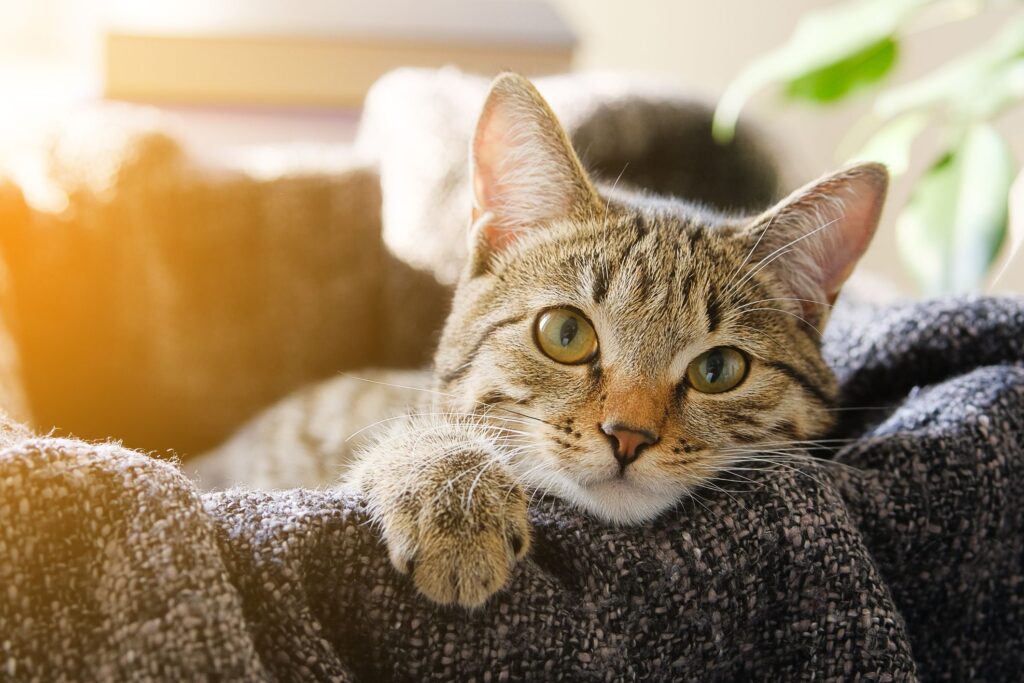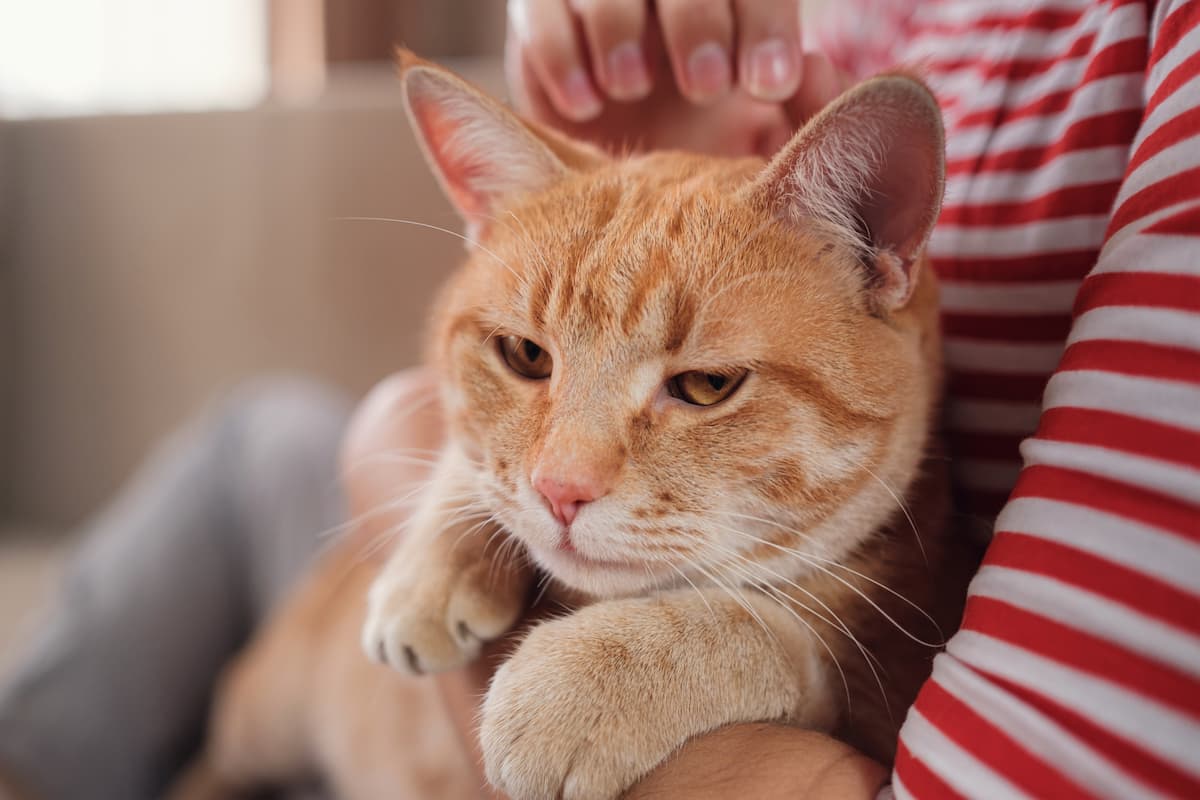Yes, cats often become more affectionate as they age. While kittens and younger cats are typically more playful and independent, older cats tend to mellow out and seek increased attention and companionship from their owners. They may show their affection through purring, kneading, cuddling, and seeking more physical contact.
However, individual cat personalities can vary, and some may retain their independent nature even as they grow older. Providing a loving and nurturing environment can encourage affectionate behavior in aging cats, strengthening the bond between the cat and their owner.
What Age Will My Cats Start Being More Cuddly And Loving?
Certainly, the timeline for when a cat becomes more affectionate and cuddly is influenced by various factors, including their personality, early socialization, and life experiences.
Individual Personality
Just like humans, cats have unique personalities. Some kittens and young cats may naturally be more affectionate and cuddly from the start, while others might be more independent and reserved. This individual temperament can influence when a cat begins to show increased affection.
Early Socialization

Kittens who receive positive socialization during their early weeks of life, particularly with humans, are more likely to become affectionate and cuddly pets.
Cats that have positive experiences with people from a young age tend to be more comfortable with human interaction as they mature.
Life Experiences
A cat’s life experiences can also shape their behavior. If a cat has experienced trauma, neglect, or any negative interactions with humans in the past, they may be more reserved and take longer to become affectionate. Creating a safe and loving environment is essential for helping such cats become more loving over time.
Adulthood
While some cats may become affectionate at a young age, many cats tend to become more affectionate as they transition from kittenhood to adulthood. This is typically around 1-2 years of age. They may become more attached to their human companions and seek out more cuddle time.
Senior Years
Often, a significant increase in a cat’s affection and cuddliness is observed during their senior years, which typically begin around 5–6 years of age. Senior cats usually mellow out and seek more companionship and physical contact. They may enjoy spending time with their owners on the couch or their laps.
How Do Cats Express Love?
Cats express love and affection in various ways, and cat owners need to recognize these signals to foster a strong bond. Here are common ways cats show love
Purring: Purring is a classic sign of a content and affectionate cat. Cats may purr when they’re being petted, cuddled, or simply content in your presence.
Kneading: Cats knead with their paws, pushing in and out against a soft surface. This behavior is a carryover from kittenhood when they kneaded their mother’s belly to stimulate milk flow. Kneading is a sign of comfort and affection.
Head-Butting: Cats may gently head-butt or nuzzle you. This is a way of marking you with their scent and showing that they feel safe and affectionate with you.
Slow Blinking: Cats may engage in slow blinking when they make eye contact with you. This is a sign of trust and affection. You can respond with a slow blink to reciprocate the sentiment.
Bringing Gifts: Cats might offer “gifts” like toys or even prey (if they are outdoor cats). This behavior stems from their natural hunting instincts and is a sign of sharing and affection.
Cuddling: Cats that seek physical closeness and enjoy snuggling are showing their affection. They may curl up next to you, on your lap, or even on your chest.
Follow You Around: Cats that follow you from room to room are displaying their attachment. They want to be near you and involved in your activities.
Grooming: Mutual grooming is a way cats show affection to one another. If your cat licks you, it’s a sign of love and bonding. You can reciprocate by gently petting or brushing them.
Presents and Attention: Cats may meow or vocalize to get your attention. They may want to play or simply be near you. Responding to their cues with playtime and interaction reinforces your bond.
Sleeping Together: Cats that choose to sleep close to you are expressing their trust and affection. It’s a vulnerable state, and they feel safe by your side.
How Does Age Affect a Cat’s Behavior and Affection?
The age of a cat plays a significant role in shaping its behavior and affectionate tendencies.
Kittenhood (0-6 Months)
Kittens are full of energy and curiosity during their first few months of life. They express affection through playfulness, kneading with their paws, and seeking warmth and comfort from their mother or human caregivers.
As they develop, kittens are more likely to engage in active play, and their affection is demonstrated through their active interaction with people and other pets.
Adolescence (6 Months – 2 Years)
During the adolescent phase, cats may become more independent and test boundaries. They might explore their territory, mark their territory with scent markings, and engage in more solitary activities.
While they may appear less affectionate, it’s important to recognize that they are maturing and their behaviors are often influenced by the desire for independence.
Adulthood (2-7 Years)
Adult cats tend to become more settled and affectionate. They establish routines, bond closely with their human caregivers, and express affection through purring, cuddling, and kneading.
Many adult cats are consistent in their affectionate behaviors and enjoy spending quality time with their human companions.
Senior Years (7+ Years)
Senior cats often mellow out and seek more companionship. They become more affectionate and may spend extended periods cuddling and seeking human interaction.
These cats require extra care and attention in their later years, but their love and devotion often become more pronounced.
Do Male Cats Get More Affectionate As They Grow Older?
Yes, male cats get more affectionate as they grow older, but this behavior change is not solely determined by their gender. The level of affection a cat displays is influenced by a combination of factors, including their personality, socialization, and life experiences.
In many cases, male cats, like their female counterparts, tend to mellow out and seek more companionship as they enter their senior years, typically around 7-10 years of age. This increase in affectionate behavior is often associated with their desire for comfort and the need for companionship.
However, it’s essential to recognize that each cat is unique, and their behavior can vary based on their traits. Some male cats may exhibit more affectionate behavior at a younger age, while others may remain independent even as they grow older. Building a strong bond with your cat through positive interactions and a nurturing environment can encourage and strengthen affectionate behavior, regardless of their gender or age.
What are some cat breeds that become more affectionate?

Several cat breeds are known for their affectionate nature and tend to be loving and cuddly. Here are some cat breeds that often display increased affection
Ragdoll: Ragdolls are known for their gentle and docile nature. They often go limp when picked up, hence the name “Ragdoll.” They are typically very affectionate and enjoy human companionship.
Maine Coon: Maine Coons are one of the largest domestic cat breeds, known for their friendly and sociable personalities. They often form strong bonds with their human families.
Siamese: Siamese cats are vocal and love to communicate with their owners. They are known for their affectionate and loyal nature.
Birman: Birmans are gentle and sweet-natured cats that enjoy being part of the family. They often seek out attention and affection.
Burmese: Burmese cats are highly social and thrive on interaction with their human companions. They are affectionate and playful.
Scottish Fold: Known for their unique folded ears, Scottish Folds are often affectionate and enjoy spending time with their families.
Sphynx: Sphynx cats, despite their lack of fur, are warm and affectionate. They need more attention and interaction to stay happy.
Devon Rex: Devon Rex cats have a playful and affectionate disposition. They often seek human companionship.
British Shorthair: British Shorthairs are known for their calm and easygoing nature. They may not be overly demanding but enjoy spending time with their owners.
Russian Blue: Russian Blue cats are gentle and loving, forming strong bonds with their families.
FAQ
What age are cats the least cuddly?
Cats are typically least cuddly during their adolescent phase, which occurs between 6 months and 2 years of age. At this stage, they are exploring their independence and may be less interested in cuddling. However, individual personality and early socialization can also impact their cuddliness.
How can I make my cat more cuddly?
To encourage your cat to be more cuddly, offer a comfortable and inviting environment, provide gentle and consistent affection, respect their boundaries, and engage in interactive play. Spend quality time with your cat and build trust gradually, allowing them to initiate cuddle sessions.
Why is my cat more affectionate lately?
There could be various reasons for your cat’s increased affection, including feeling safe and secure, improved bonding with you, a comfortable environment, or even health-related factors.
At what age do cats bond with humans?
Cats can begin forming bonds with humans from a young age, often during kittenhood. However, strong and enduring bonds can develop at any age, with the potential for deeper connections as cats grow and experience life with their human companions.
Do cats prefer female owners?
Cats do not inherently prefer one gender over another. They form attachments based on individual interactions and care rather than the owner’s gender. Cats are known to bond with the people who provide them with love, attention, and a secure environment.
Do stray cats choose their owners?
Stray cats typically do not choose owners in the same way as domesticated cats. However, some strays can become more comfortable and form bonds with individuals who provide food, shelter, and care, effectively developing a connection over time.
How do you tell if a cat has chosen you?
A cat may choose you if they seek your company, initiates physical contact like cuddling and purring, display trust by showing their belly, and follow you around. A strong bond is often indicated by your cat’s comfort and contentment in your presence.
Do stray cats get jealous?
Stray cats may exhibit behaviors that seem like jealousy when they perceive a threat to their access to resources like food or shelter. However, their behaviors are typically survival-driven rather than true jealousy as humans experience it.
Is it lucky if a cat gives birth at home?
In some cultures, it is considered lucky if a cat gives birth at home. However, this belief varies widely, and whether it’s seen as fortunate or not depends on cultural and individual perspectives. The most crucial aspect is ensuring the health and well-being of the mother cat and her kittens during and after birth, regardless of the location.
Final words
On the whole, the question of whether cats become more affectionate with age is not a one-size-fits-all answer. While many cats do tend to grow more loving as they age, it’s crucial to recognize that every cat is unique. Factors like individual personality, early socialization, and life experiences play a significant role in determining a cat’s affectionate behavior.
What’s most important is the bond you share with your feline friend. Building trust and providing a loving, safe, and nurturing environment can encourage affectionate behavior in cats of all ages.
Whether your cat is a playful kitten or a wise old senior, the key is to cherish and enjoy the unique moments of love and companionship that you share with your furry family member. So, no matter the age, your cat’s affection is a treasure to be cherished

